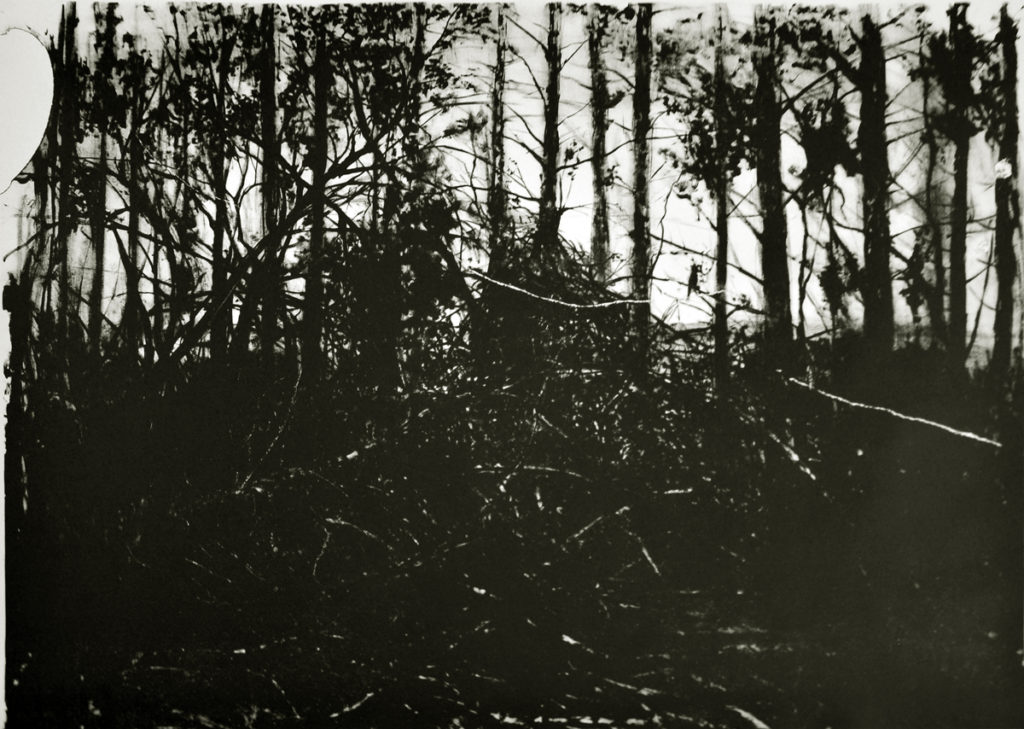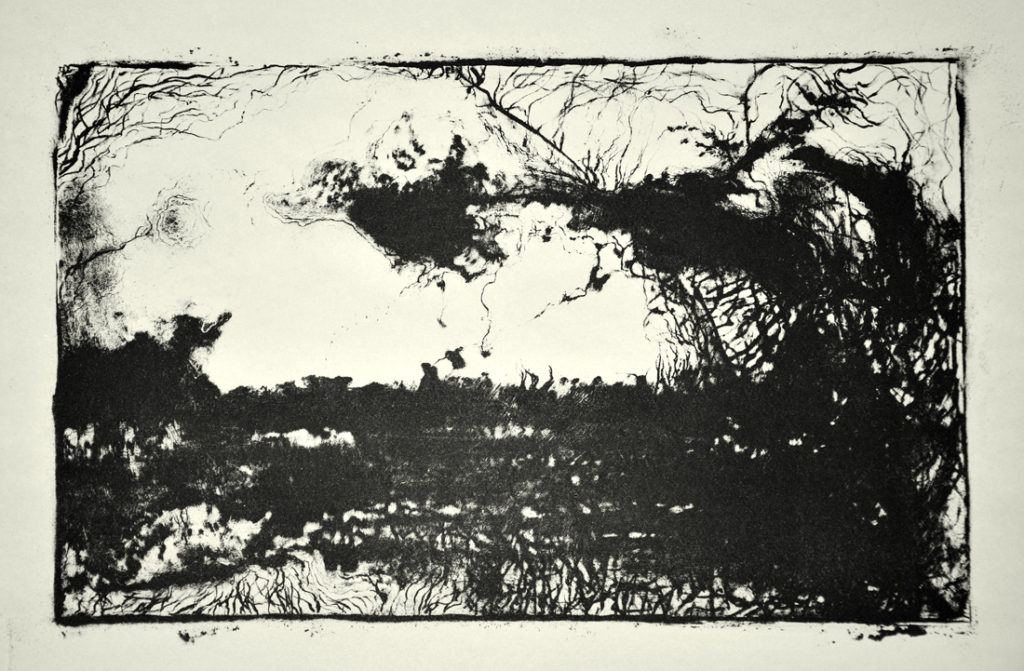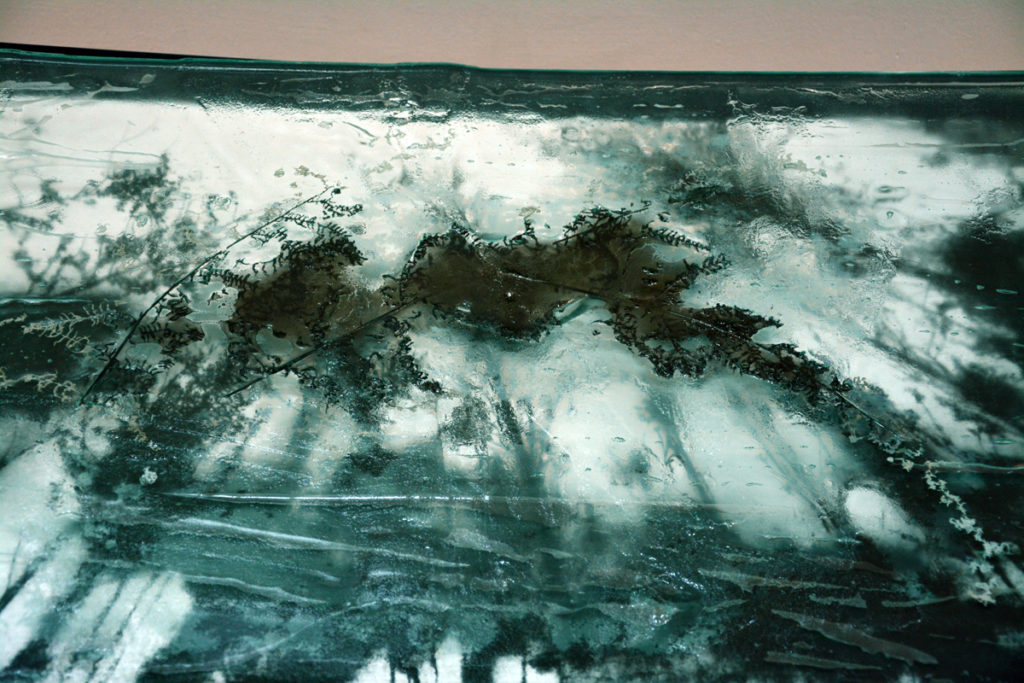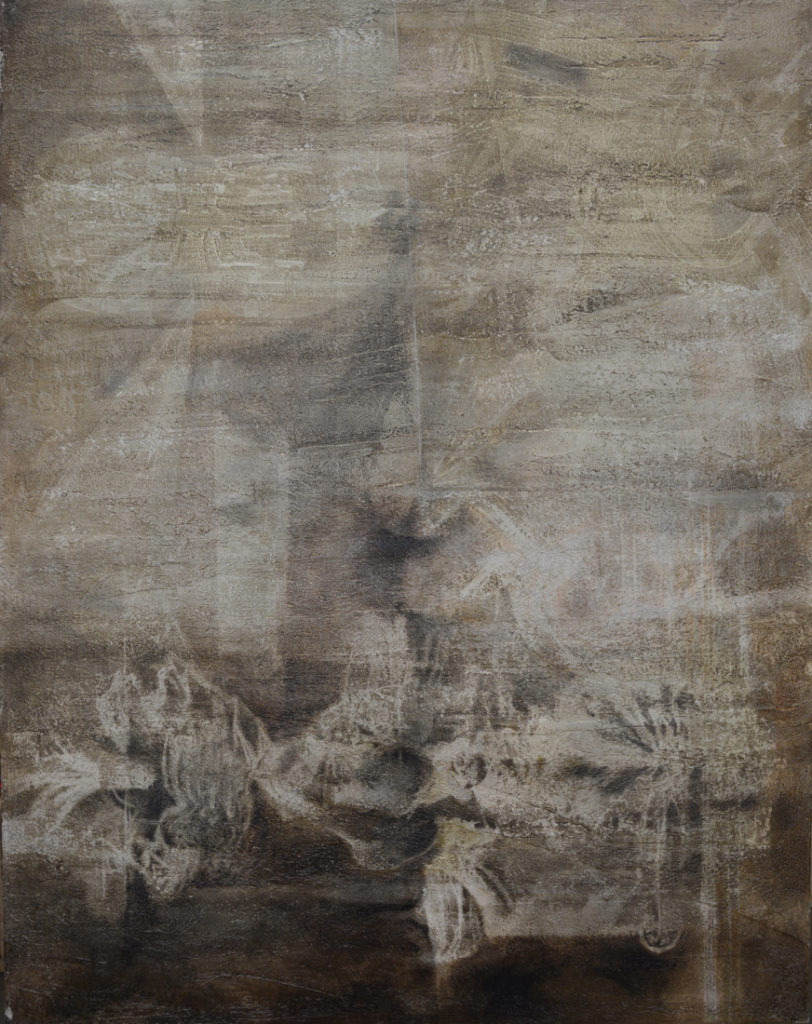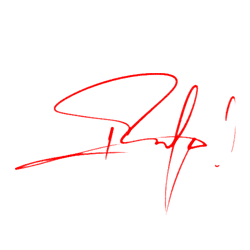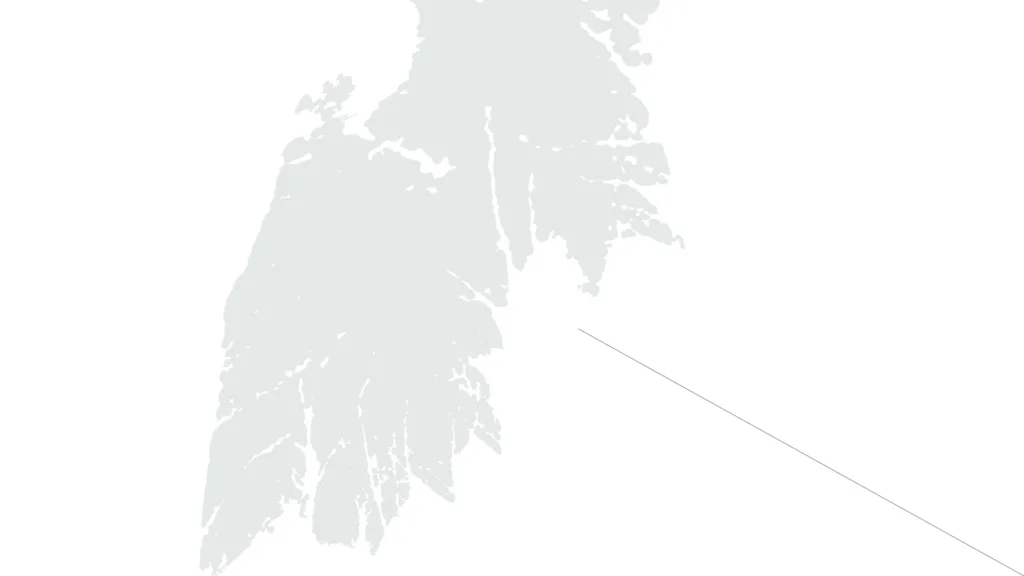
Project curator: Niccolò Lucarelli
Works by Rafał Podgórski
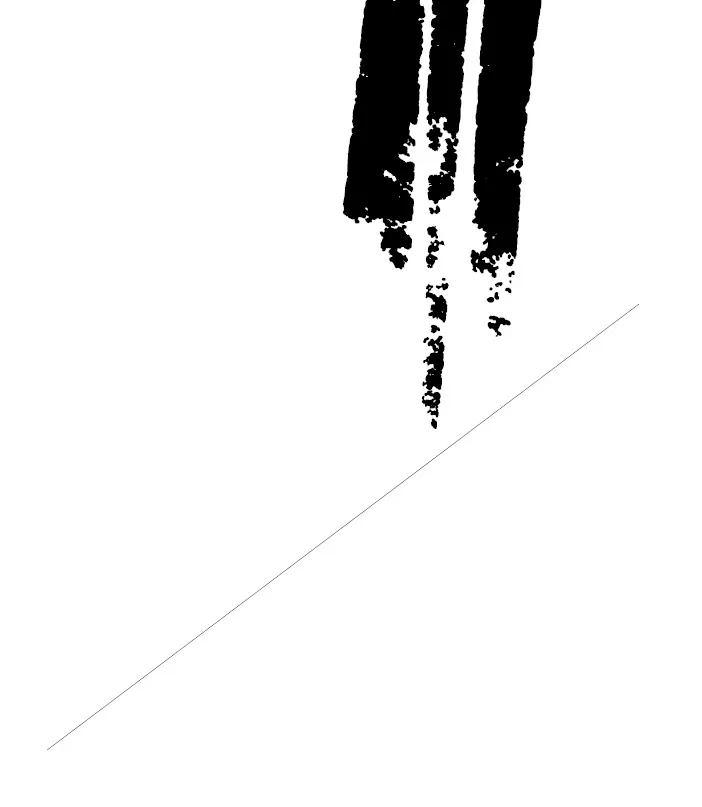
POLAND: POlemic of modular and wild LAND
Over the centuries, Poland has always been a country in struggle, squeezed between the Germanic nation and the Russian one, which, albeit under different political entities, have made Polish land a terrain of conflict and conquest.
Since 1989, Poland regained its freedom, but the road has been long and winding; in his Droga donikąd Mackiewicz describes the „technique” of moral decay, i.e. the general reaction of society to the pressure of the Soviet atmosphere. The modernity of the real socialistic society has actually brought new problems. The „new” individual had been uprooted from his roots, he had lost his reference values, he had lost his freedom of thought. But, paradoxically, after 1989 there was a risk of becoming addicted to consumerism; it’s another kind of moral decay, no less dangerous than the one people risked under communism. The problem was always the same. Stanisław Jerzy Lec “Do not let freedom of speech be imposed before than freedom of thought”. In fact, it is a question of being free to think what to say, not of being free to say things thought by others. After all, consumerism too is the imposition of desires and needs that are not one’s own, is the creation of expectations towards a reality imagined by others. Avoiding being overwhelmed by consumerism: it is a social challenge that almost every society must face, and Poland too is looking for its own way to face it.
In 2012 Paweł Ruszkowski wrote that one of the main reasons for the negative evaluation of the existing social order in Poland is the difficulties in adapting people to the conditions and mechanisms of the market economy1, where Poland entered immediately after the fall of the Wall. For better or for worse, this new type of economy represented for Poland the entry into the Western conception of modernity; a long and difficult process of absorption, if still in July 2020, in an interview, Professor Ryszard Cichocki of the Faculty of Sociology (Adam Mickiewicz University, Poznan) declared that Polish society is the most divided on in Europe. The main dividing line passes through the attitude towards the modernization process2. This is the crucial challenge that Polish society has yet to face, knowing that any form of modernity cannot disregard the relationship between nature and culture.
Art must push for a return to nature, both for practical reasons of combating climate change and for ethical reasons of inclusion and respect towards every living being. Not a return to the „state of nature”, but an adoption of the practices and thinking of nature to build a new model of society.
Ruszkowski believes that a strategy for further modernization of Poland is urgently needed, in the construction of educational programs in support of the pro-modernization attitudes present in individual classes. With this in mind, it is important not to forget one’s roots; to build the future it is also necessary to look behind to the past. Entry into modernity can take place by recovering the relationship with nature, not only from a biophysical point of view, but above all mental, imagining nature as a series of practices of harmony, inclusion, respect and coexistence.
A new ecology of the individual is needed, to find a balance with the modernity and market economy, an ecology where the individual is a living being and not as a „consuming” being. Jan Gwalbert Pawlikowski wrote it in 19134: we can reach the pinnacle of cultural development only by carefully respecting and protecting the natural heritage.

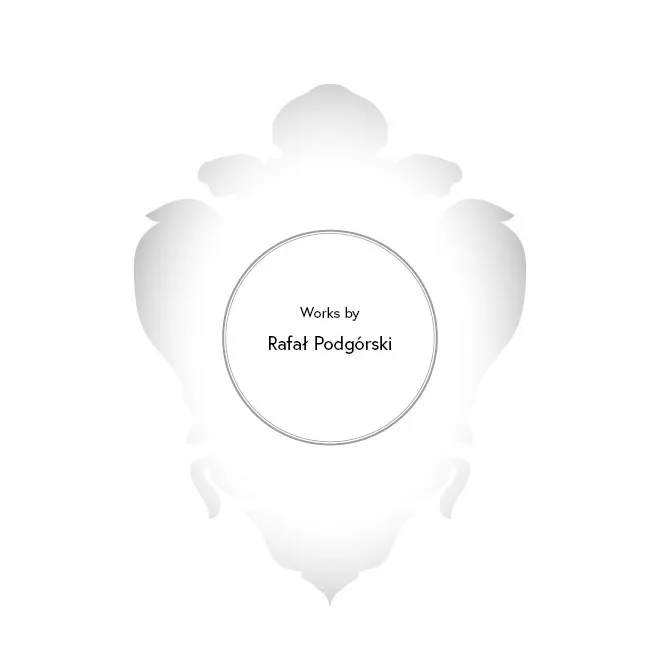
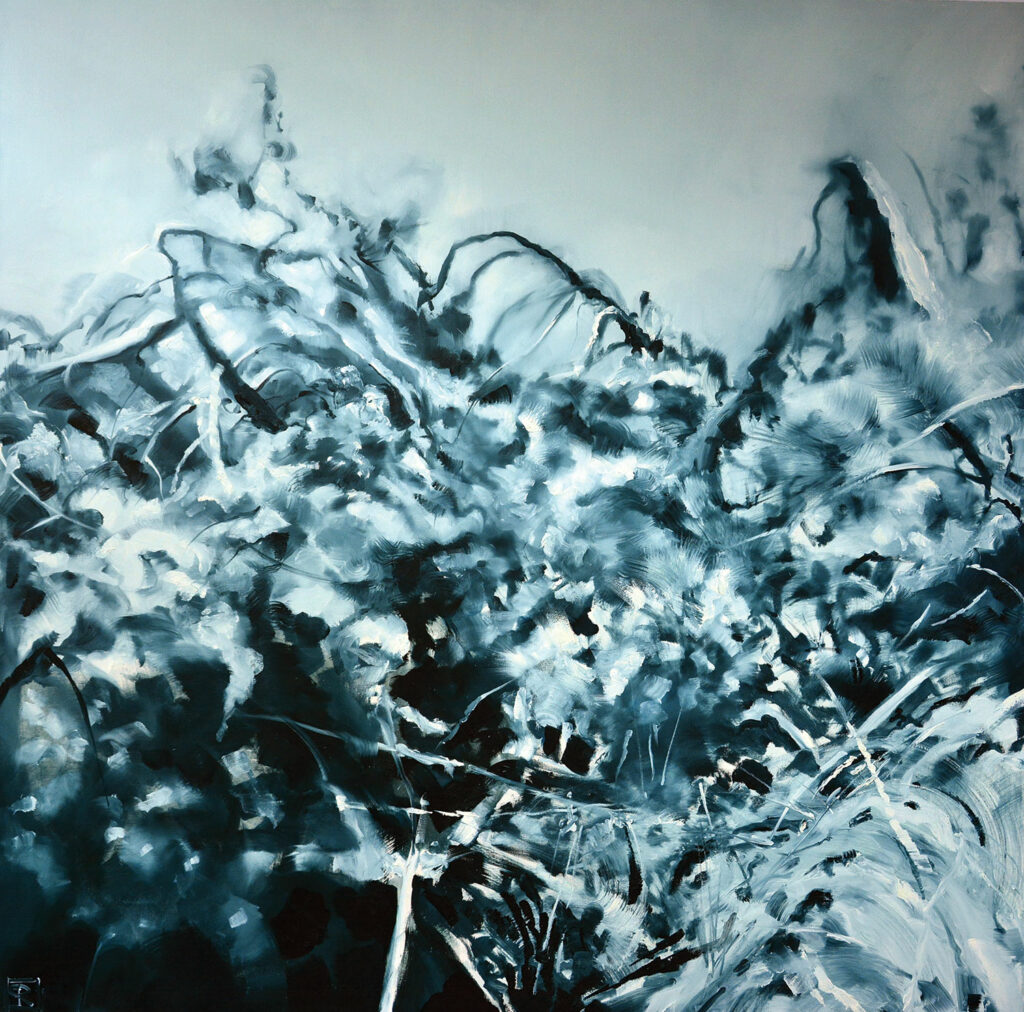


„Bluewood”. Screenprinting on glass. 100×70 cm
